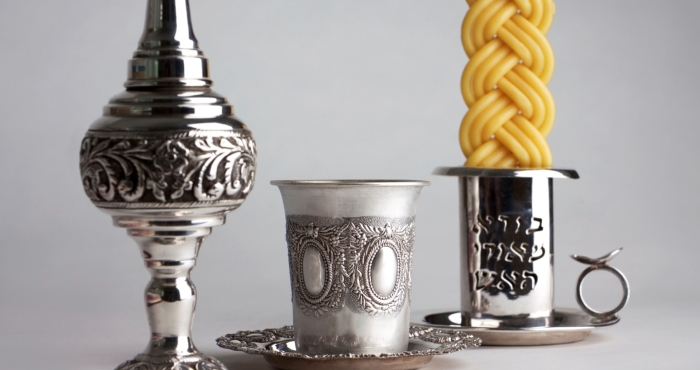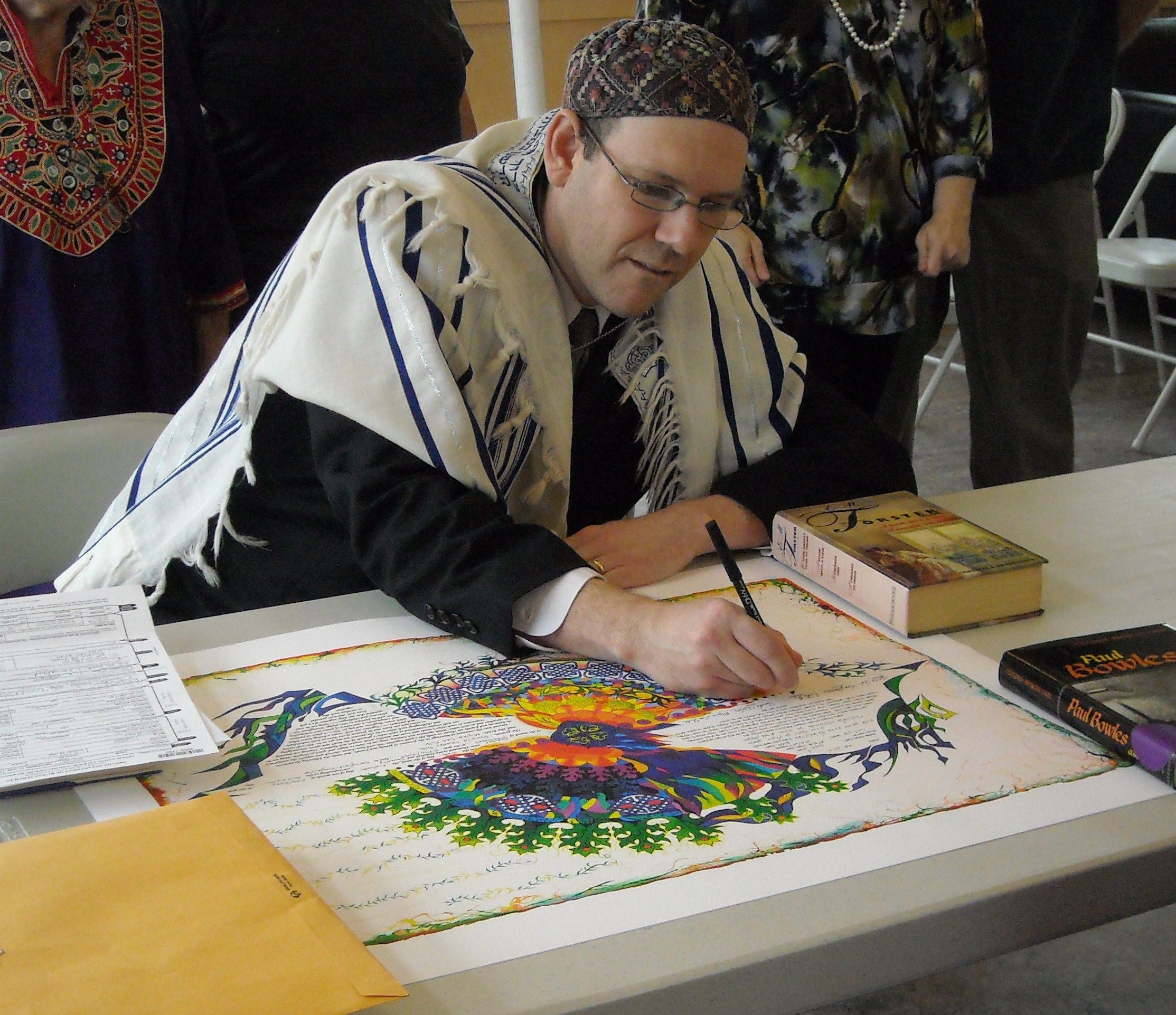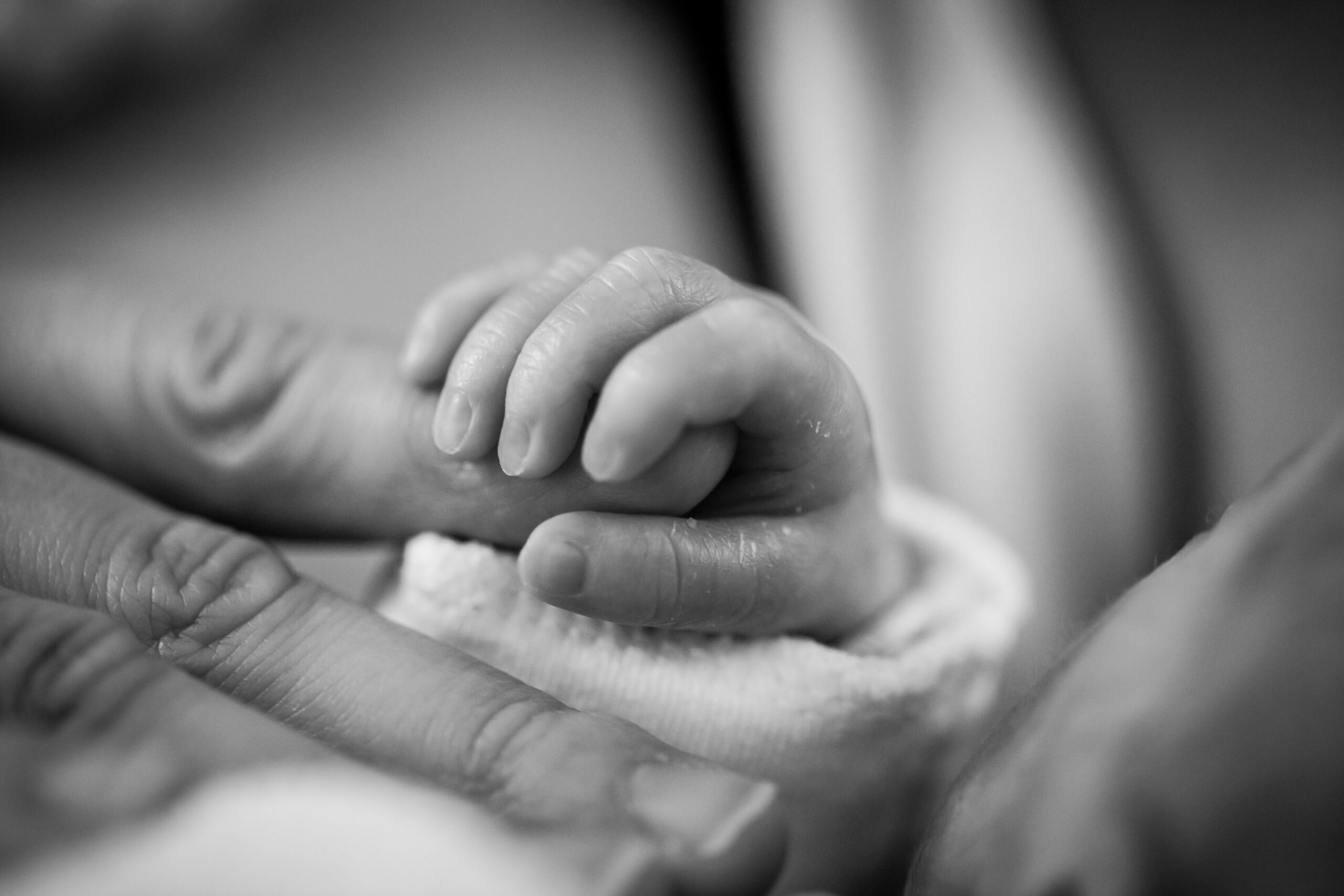In Jaime’s blog, originally published on Kveller.com, she explains:
“We welcomed our last-born into our family on a Saturday evening with havdalah–a ceremony that celebrates transitions from the holy to the mundane, from the extraordinary to ordinary. Conveniently, havdalah uses three symbols (a braided candle, a spice box, and a cup of wine), which we described in a way that was representative of each of our three children, choosing the spice box for the baby. We provided a variety of different spices, each one with an explanation and associated blessing for the baby, that people could choose and pour into our “family spice box”–a box now filled with not only sweet smelling fragrances but a multitude of blessings for our family.”
The following ceremony was performed by Rabbi Noam Katz and Jaime Waldman to mark the welcoming of their third child into their family and into their community. Following the giving of his Hebrew name, the family chose to end with the havdalah ceremony marking the end of Shabbat, but also the completion of their family. Below is an outline of both of these ceremonies.
Outline for Covenant & Naming Ceremony
Open the ceremony with words and melody of “Hinei Mah Tov”
The Rabbi picks up baby from Kisei Eliyahu (Elijah’s Chair) and wraps the baby in the father’s tallit.
The grandparents are invited up. As the baby is passed from one grandparent to the next, they are each invited to share a quiet blessing with the baby in their arms.
Rabbi offers a covenant blessing (bris was performed on the 8th day) and a naming blessing (sharing both the English and Hebrew names).
The parent(s) share the meaning behind the name(s) and offer a blessing to their child.
The priestly blessing is offered to the baby by his grandfather.
All join together for the words of the shehecheyanu.
We then transition into the Havdalah ceremony.
Filling the Spice Box
The ritual of the spices, b’samim, is the communal or shared ritual of the Havdalah service. While the wine is traditionally drunk by those leading and each individual puts their own hands up to the glow of the candle light, the spice box is passed from person to person so that the whole community can share in its sweet and fragrant aroma.
As such, we would be honoured if everyone present would join in creating a special spice box for our new son and brother.
Please carefully select a spice and bring it to your seat, which you will be asked to add to the baby’s spice box (expertly decorated by his big sister) during our ceremony.
Signs for individual spices:
Cinnamon
Used in both sweet and savoury foods. Just as the cinnamon is flexible, we hope that this child will have an easygoing demeanor and smoothly adapt to different situations.
Star Anise
Star anise is a key ingredient of the traditional five-spice powder of Chinese cooking. We hope the baby is a team player and active community member, contributing and enriching the lives of those around him.
Cloves
Perhaps the most commonly used Havdalah spice, cloves retain their aroma for a long time. With the cloves we wish the baby a long and healthy life.
Nutmeg
Along with mace, nutmeg is derived from the fruit of the nutmeg tree, the only tropical fruit that is the source of two different spices. The first harvest of nutmeg trees takes place 7 to 9 years after planting and the trees reach full production after 20 years. Nutmeg instills in the baby the importance of hard work, patience and perseverance.
Cardamom
Cardamom has a strong, unique taste. Green cardamom is one of the most expensive spices by weight, but little is needed to impart flavour. It is best stored in pod form because once the seeds are exposed or ground, they quickly lose their flavour. With the cardamom, we impart our wishes for the baby to shine in his own special way, to follow his passions and interests, and to add his unique “flavour” to whatever path he pursues.
Fennel
Ancient Romans regarded fennel as the herb of sight. For us, it symbolizes our hope that the parents and family members entrusted with this baby’s upbringing are imbued with insight and intelligence as they guide him through life.
Havdalah
Havdalah marks the transition of Shabbat and the rest of the week. Today it also marks the completion of our family unit. We savor the sweetness of what’s come before and know that it will only enrich our future.
For kiddush we will use the same cup used at the baby’s bris and this cup represents the newest addition to their family.
The spices represent every person in the greater community who will be offering an ingredient in our spice box (see above for instructions on filling the spice box).
The candle, with three wicks, represent each of our three children. When they all combine and intertwine they provide the brightest light.
Sing La-yehudim, havdalah blessings, and Eliyahu Hanavi
Conceived by Rabbi Noam Katz and Jaime Walman, performed by Rabbi Stephen Wise, with contributions from Miriam Shuval.













